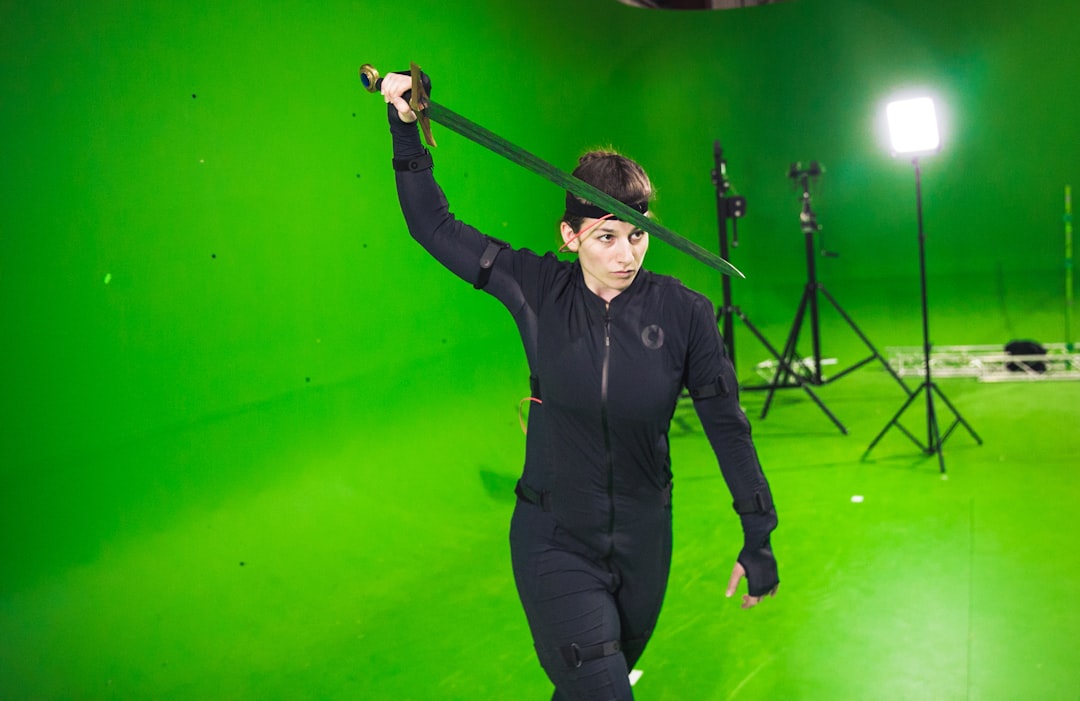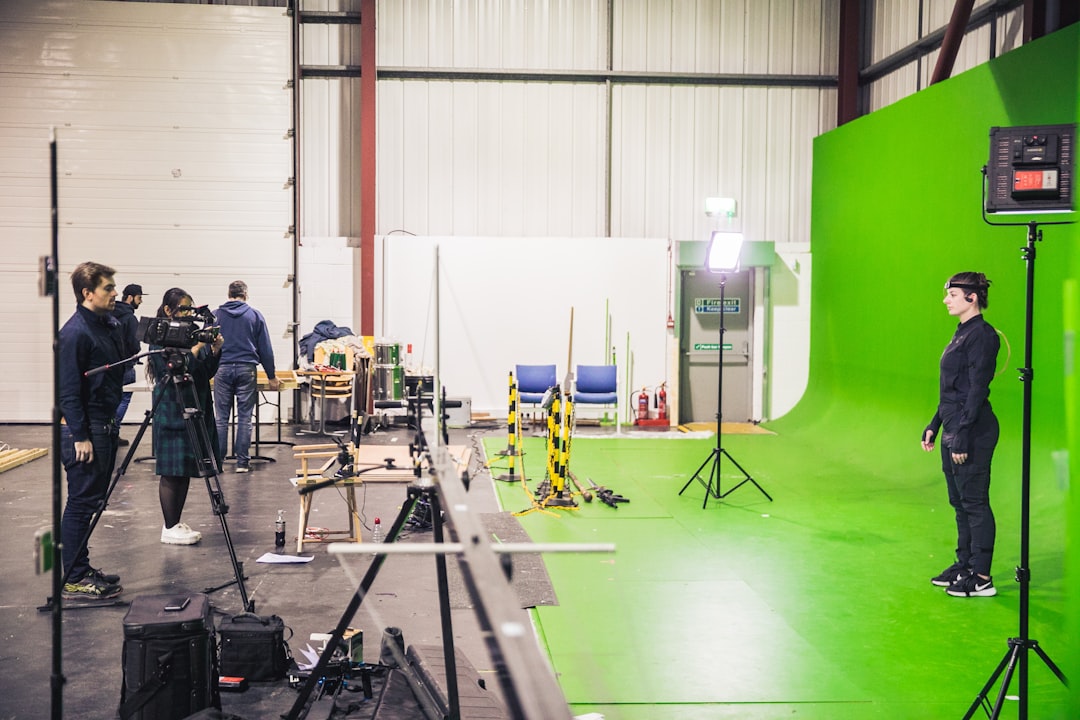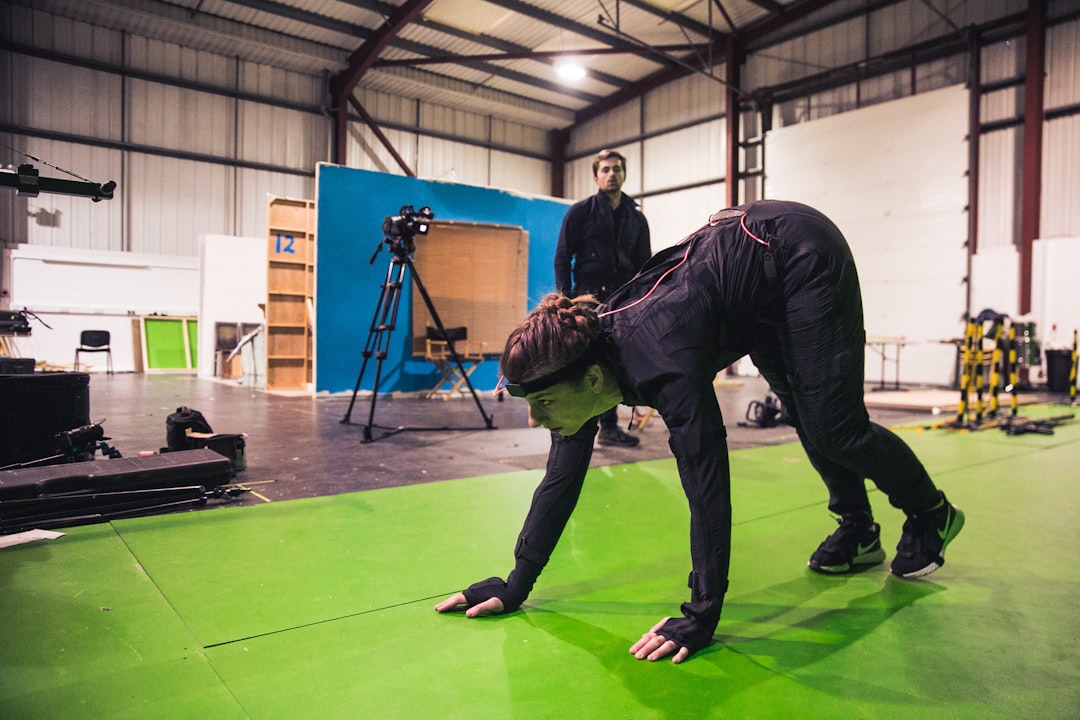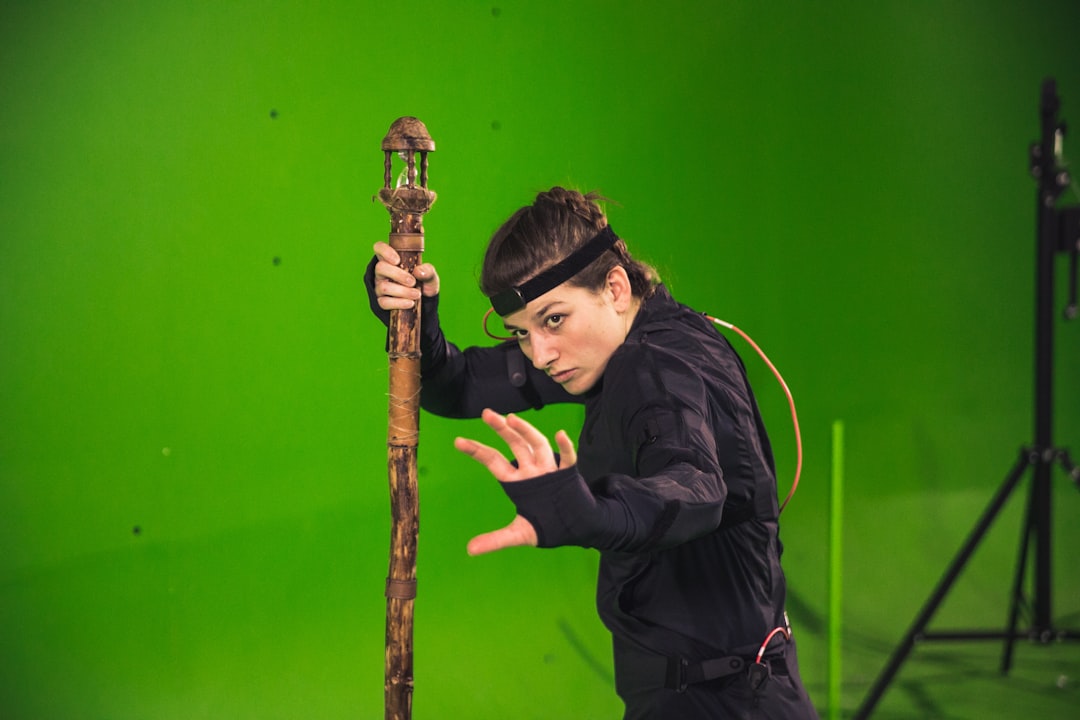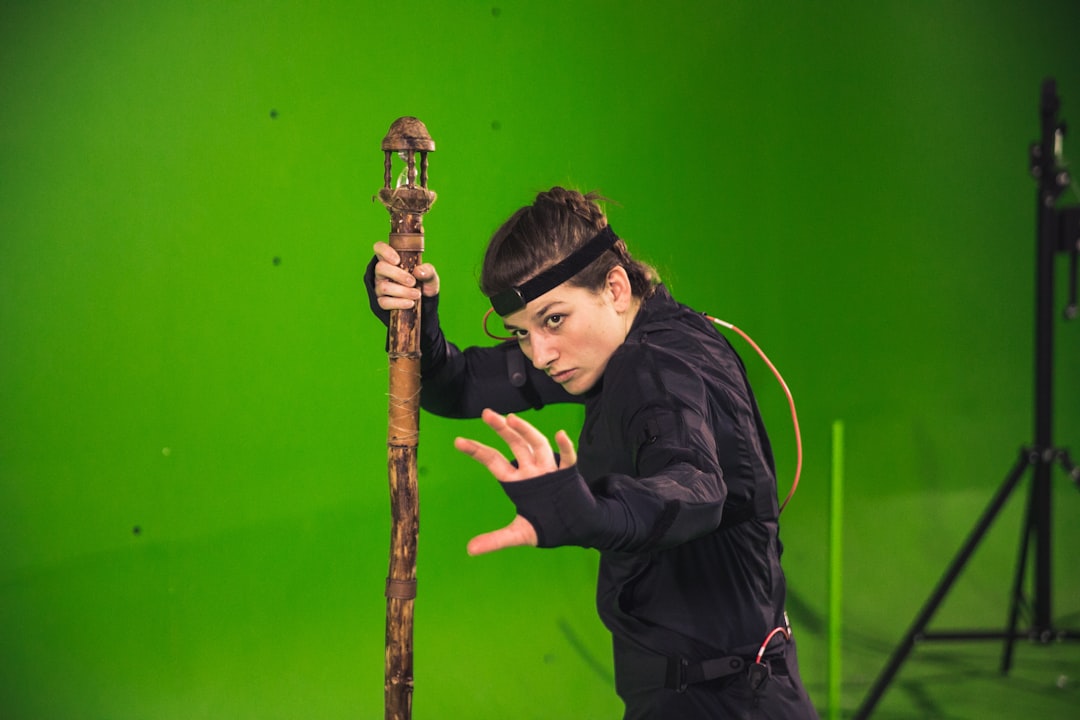Move Live AI-Driven Markerless Motion Capture Revolutionizes Video Production
Move Live AI-Driven Markerless Motion Capture Revolutionizes Video Production - AI-Driven Markerless Motion Capture Eliminates Need for Suits
The emergence of AI-driven markerless motion capture systems, exemplified by solutions like Move Live, signifies a major change in how video production utilizes motion capture. Instead of relying on bulky, often expensive, suits and complex equipment, these systems use AI to analyze standard video footage. The AI isolates and tracks points on the human body, generating high-quality 3D motion data in real-time. This streamlined process simplifies setup and opens up motion capture to a broader range of applications, spanning industries from interactive entertainment to live performances.
The potential of this technology to make motion capture more affordable and readily available is undeniable. However, its full impact on the quality of motion capture and the evolution of established industry standards is yet to be seen. The future of how motion capture is conceived and deployed, especially in high-stakes production environments, will be profoundly affected by this evolving technology. This technology potentially reimagines motion capture for the future, though whether it will be a true upgrade for all applications is yet to be determined.
Move AI's Move Live system presents a compelling alternative to conventional motion capture. By utilizing AI-driven computer vision, it extracts motion data directly from video footage, removing the need for bulky suits and markers. This approach allows for a much wider range of environments, from simple home setups to complex film shoots, something previously restricted by traditional methods.
The core of Move Live lies in its ability to identify key points on the human body within video streams. Sophisticated AI models, coupled with physics-based understanding, translate this into 3D motion data in real-time. While it's still early days, this method has the potential to significantly impact various industries including virtual production, gaming, and broadcasting, primarily by making the technology more widely available and reducing the barrier to entry.
The system's integration with software like disguise is interesting, as it bypasses lengthy setup procedures. This is a potential advantage as it suggests a simpler workflow, which is a critical aspect when considering ease of use for broader adoption.
However, it's important to consider the limitations of the technology, especially in demanding scenarios. While impressive, current AI-driven motion capture might struggle in highly complex environments with frequent occlusions. Further development is essential to refine the system's ability to handle a wider array of situations and achieve greater accuracy, particularly in handling complex movements and environments. Still, Move Live and similar markerless approaches are noteworthy in that they contribute to the broader democratization of motion capture, potentially ushering in a new era of accessible and versatile animation creation.
Move Live AI-Driven Markerless Motion Capture Revolutionizes Video Production - Real-Time Capture of Multiple Subjects in Large Spaces
The ability to capture multiple subjects in real-time within large spaces represents a notable step forward for motion capture technology. Systems like Move Live have shown the capacity to track the full-body movements of up to two individuals simultaneously in areas as large as 20m x 20m. This expansion of the capture area opens up new creative possibilities for a wider range of environments, benefiting filmmakers, event producers, and other creatives. However, the ability to accurately capture motion in complex environments with many moving subjects still presents a challenge. It remains to be seen how well these systems can maintain their accuracy and robustness in these demanding situations. This field is still in its developmental stages, but the implications for video production are already profound. While there are many possibilities, this evolving technology is still finding its place within the broader motion capture landscape, showcasing both the potential and the areas needing further development.
Capturing the movement of multiple individuals within expansive spaces presents a unique set of challenges for motion capture. Traditional methods often necessitate a complex setup with numerous cameras, making them cumbersome and limiting for larger environments. However, newer markerless systems, often driven by AI, have started to address this issue by potentially needing fewer cameras to achieve a wide coverage area, potentially simplifying the overall deployment process.
The accuracy of real-time motion tracking has steadily improved due to advancements in computer vision. Modern systems can now pick up on finer details like facial expressions and subtle gestures, making the captured animations far more lifelike and nuanced. This ability to understand more complex movements has broadened the range of applications for motion capture technology.
One of the longstanding hurdles in motion capture has been sensitivity to lighting conditions. Traditional systems could be greatly affected by shadows and inconsistent lighting, significantly impacting their performance. AI-powered methods have shown promise in tackling this problem, as they can capture movements in more diverse lighting scenarios, greatly expanding the range of locations suitable for filming.
The ability to simultaneously capture the movements of multiple subjects from a single video feed can streamline production workflows considerably. It simplifies the creation of interactive performances, letting creators capture character interactions in real-time without the need for complex multi-camera setups. This kind of real-time capture simplifies collaborative efforts.
A notable characteristic of many AI-driven markerless systems is their adaptability. Unlike traditional systems that necessitate meticulous calibration, they can often adjust to varying filming circumstances on the fly. This adaptive ability minimizes downtime and boosts overall efficiency during production.
Research suggests that AI's capacity to utilize deep learning algorithms to improve accuracy as it processes more data is leading to quicker improvements in motion capture technology. The potential for these systems to become increasingly reliable over time could be a significant game-changer for the field.
The integration of physics into AI-based motion capture is quite interesting. It helps to improve the simulation of natural human movements, potentially leading to more convincing animations in virtual environments and games. It could be a crucial factor in enhancing realism in various digital applications.
Markerless approaches can offer significant freedom to performers compared to traditional systems. Without the constraints of bulky suits or intricate marker placements, performers can move more naturally, allowing for a greater degree of spontaneous expression and creativity. This is perhaps one of the most compelling aspects of these new approaches.
This technology also opens doors for international collaboration, enabling artists and performers from different parts of the world to contribute to the same scene remotely. The possibilities for creating truly global productions with this approach are vast.
While impressive, AI-driven motion capture still encounters obstacles when dealing with highly complex scenarios like partial occlusions or intricate interactions between multiple people. Continued development and refinement will be crucial to fully addressing these limitations and guaranteeing reliable performance in a wider variety of environments. This means researchers still have a lot of work ahead to further push this technology.
Move Live AI-Driven Markerless Motion Capture Revolutionizes Video Production - Solo Operation and Quick Setup Streamline Production Process
The ability for a single person to operate AI-driven markerless motion capture systems like Move Live, combined with its rapid setup, simplifies the entire video production process. This technology streamlines workflows by removing the need for large teams and extensive equipment. With a setup time of only an hour and a quick one-minute calibration, the process becomes much faster and more adaptable. This makes motion capture accessible to a wider range of individuals and smaller productions, especially those with limited resources or budgets. It is, however, important to note that the reliability of this technology in complex, dynamic environments involving many moving individuals still needs refinement through ongoing research and development. While it shows much promise, it’s not yet the solution for all motion capture needs, especially when the highest accuracy is crucial.
Move Live's markerless motion capture approach seems to streamline the whole production process, which is intriguing from an engineering perspective. It appears that setting up the system is incredibly fast, taking only around an hour, compared to traditional methods that can take much longer. This reduction in setup time could be a big advantage in fast-paced environments or situations where time is a major constraint.
Furthermore, the technology doesn't seem to require a large team to operate, which lowers the barrier to entry for smaller projects. A single person can potentially manage the system. That's noteworthy since motion capture systems have often been considered quite specialized, requiring expertise and specialized personnel. One might speculate whether this ease of use comes with a trade-off in overall control or customization, but it does open the technology to a wider community of creators.
Another key aspect is cost. Since it leverages standard camera setups instead of the specialized rigs often used in traditional capture, the initial cost could be significantly lower. This makes the technology potentially accessible to projects with more limited budgets. Of course, one must evaluate whether the quality of results is comparable across the two approaches to see if the cost-effectiveness translates to a comparable end product.
The system's ability to adapt to a wide range of environments, including outdoor spaces or even slightly cluttered rooms, is impressive. This stands in contrast to traditional motion capture setups which often require precisely controlled studios. The robustness of the technology in handling varied spaces is a major plus. Whether this flexibility leads to a trade-off in accuracy or reliability remains a question for further exploration.
It seems the technology's capacity for real-time motion tracking of multiple individuals is noteworthy. This has been a major challenge for conventional methods. The technology's capacity to cope with changing lighting and deal with potentially complex scenarios with multiple moving individuals will be a crucial factor in determining its impact on the future of motion capture in areas such as live performance or broadcast production.
It's also interesting that the system can potentially integrate with other technologies such as VR and AR, which is encouraging for creating immersive experiences. Moreover, the scalability of the setup could prove useful for projects of various scales, allowing for a greater level of flexibility in adjusting the motion capture aspect of a production.
Having said that, it's important to keep in mind the potential trade-offs involved in a more simplified setup. The ability for a performer to get immediate visual feedback from the system might be helpful but could also be distracting, depending on the application. The overall implications and limitations of this technology will become clearer as it matures and is tested in a wider range of use cases.
Move Live AI-Driven Markerless Motion Capture Revolutionizes Video Production - Seamless Integration with Unreal Engine and FBX Export
Move Live's AI-driven motion capture integrates well with Unreal Engine, offering a potentially simplified workflow for video production. The system allows for real-time export of captured motion data in the FBX format, a common file type used in Unreal Engine. This direct export streamlines the process of incorporating captured movements into projects, potentially bypassing more complex and time-consuming integration steps. The hope is that this feature makes motion capture more accessible, particularly for individuals and teams who might not have specialized technical skills or equipment.
However, there are still potential hurdles. While the ease of export is appealing, the fidelity of the motion data captured and exported might not always be ideal. Some users have reported needing to manually adjust textures and settings after the FBX files are imported into Unreal Engine. This suggests that the process isn't entirely seamless and requires some refinement.
It will be interesting to see how this export feature, and the overall quality of the captured motion data, fares in more demanding production environments. As this technology matures, its ability to consistently deliver high-quality motion data suitable for a wide range of applications, including those with strict requirements, will determine its overall effectiveness.
Move Live's ability to seamlessly integrate with Unreal Engine through FBX export is a fascinating development. FBX, a widely-adopted format for transferring motion and model data, makes the process of incorporating captured motion into game engines like Unreal Engine very straightforward. The benefit here is a smooth workflow. It seems animators can begin working with the captured motion data immediately after capture, significantly speeding up the post-production process compared to more traditional approaches.
One interesting outcome of this tight integration is the potential for improved performance within Unreal Engine. FBX, when used with optimized settings, can result in smaller file sizes. This, in turn, can translate into better performance, potentially reducing the strain on processing power during real-time rendering. However, how significant this effect is in practice would need to be explored more fully.
Furthermore, the FBX format's capability to encode physics information is a significant advantage. This allows the physics of human movement generated by Move Live to be incorporated directly into the Unreal Engine environment. The result could be more natural and believable animations, particularly when considering interactions between the captured character and their environment. We need to keep in mind the limitations of physics simulations, but this integration has the potential to add a level of realism that previously might have needed far more intricate manual setup.
Another advantage of using FBX is its universality. This flexibility allows data captured using Move Live to be used with a wide variety of tools and platforms. If a studio works with various software, this interoperability can help streamline workflows and project transitions. It's intriguing to think how a wider range of tools could leverage this shared format.
Having the ability to generate high-quality animations within Unreal Engine using FBX, without needing overly specialized or costly hardware setups, is a welcome development. This removes some of the barriers to entry, making advanced motion capture technologies more approachable for smaller teams or projects with limited budgets.
The link between Move Live, Unreal Engine, and FBX seems particularly relevant to the rise of virtual production. Blending real-time motion capture data with live action footage in virtual environments is an area seeing increasing interest. This process can be optimized by seamless workflows like these, increasing the efficiency of producing sophisticated visual effects that align closely with real-world scenes. The challenges and limitations of this application of virtual production are important to consider, however.
Additionally, the simplification of animation workflows facilitated by this integration opens the door to more user-generated content. It's plausible that more individuals or smaller development teams could create more advanced animation and interactive experiences, extending the potential impact of motion capture tools beyond established studios. But it remains to be seen if the user community will adopt this simplified workflow.
Another important aspect is that FBX helps with retargeting motion data. If a team captures a movement for one character, they can potentially adapt it for other characters within Unreal Engine. This added flexibility can reduce the amount of effort required in animation pipelines and offers an interesting perspective on animation reuse. The ability to efficiently adapt motion capture to various character models is a definite benefit to any studio.
The compatibility of Move Live with FBX looks like it is creating a more forward-thinking infrastructure for motion capture integration in Unreal Engine. As Move Live and the FBX format continue to evolve, it seems likely that future developments in motion capture will be readily adaptable within Unreal Engine, making this a more future-proof technology investment. It's a fascinating development, but like all new technologies, its long-term success and impact are yet to be fully determined.
Move Live AI-Driven Markerless Motion Capture Revolutionizes Video Production - Expanded Accessibility for Lower-Budget Productions
The rise of AI-powered markerless motion capture, like Move Live, is fundamentally changing how lower-budget video production and animation can utilize motion capture. Previously, this technology was often out of reach due to the cost and complexity of specialized suits and equipment. Now, this new approach eliminates those barriers. It becomes possible for a broader array of individuals and smaller teams to incorporate sophisticated motion capture into their projects. The quick setup process and ease of operation make it practical for resource-constrained productions to access and leverage advanced motion capture techniques, fueling creativity without the typical financial restrictions. Although this technology shows a lot of promise, it is still being developed and tested. Its effectiveness and dependability across various conditions and projects remain to be thoroughly assessed. We still need to understand how it handles complex scenarios, and whether it can deliver consistent quality across different projects.
The shift towards AI-driven, markerless motion capture systems like Move Live presents a compelling opportunity for productions with limited budgets. Traditionally, motion capture has been associated with high-end film and game development, requiring specialized suits and markers that can be costly. Markerless systems, however, sidestep this by leveraging AI algorithms to extract motion data directly from standard video footage. This eliminates the need for specialized equipment, making advanced motion capture accessible to a broader range of creators.
The impact extends beyond mere cost reduction. The simplified workflows associated with these systems also lower the technical skill barriers. Many motion capture setups require specialized operators, but the intuitive nature of markerless systems enables less experienced individuals to capture and process motion data. This democratization of technology allows smaller teams and independent filmmakers to integrate sophisticated motion capture into their projects, previously an impossible feat for most.
Moreover, the AI algorithms at the heart of these systems are constantly evolving. As more data is gathered and processed, these algorithms learn and refine their ability to identify and translate human movements into 3D data. This learning curve potentially translates into better accuracy over time, benefiting even low-budget projects with smaller datasets.
The flexibility of markerless motion capture further expands its reach. Unlike traditional techniques that rely on controlled studio environments, markerless systems can operate in a variety of settings, from outdoor locations to more casually arranged spaces. This adaptability is particularly valuable for smaller productions that might not have access to elaborate studios.
Interestingly, the seamless integration with virtual and augmented reality platforms also opens up exciting possibilities for immersive storytelling. Smaller production teams can now use motion capture to create engaging interactive experiences, significantly expanding their creative potential and pushing the boundaries of what they can produce with limited resources.
The speed at which data is processed also reduces risks in low-budget projects. Instantaneous recording and export of motion data provide valuable safeguards against lost performances. This immediate backup feature offers peace of mind, especially for productions operating with tighter timelines and fewer resources.
Resource optimization is another significant benefit. The capacity to track multiple individuals using a single camera setup reduces not only equipment costs but also physical space and power consumption. This allows these productions to dedicate their limited resources to other areas of development, potentially improving the overall quality and impact of their final product.
The ability of AI systems to deliver real-time gestural feedback to performers also provides a valuable tool. This instantaneous feedback can guide performers towards achieving more natural movements, even without extensive training. This feature can lead to higher quality and more engaging performances.
The incorporation of physics-based simulations is another intriguing development. These simulations help ensure that the captured motion is both realistic and believable within virtual environments. Smaller production teams can now achieve a degree of realism previously only within the grasp of major studios.
Ultimately, this trend towards markerless motion capture has the potential to reshape how stories are told. The removal of budget constraints for smaller creators allows for a broader range of narratives and diverse perspectives to be represented in film, games, and beyond. While there's still room for refinement and improvement, markerless motion capture has the potential to be a game-changer, especially for those who previously lacked access to advanced motion capture technology.
Move Live AI-Driven Markerless Motion Capture Revolutionizes Video Production - Advanced Processing with NVIDIA RTX 6000 and Ada CUDA Support
The NVIDIA RTX 6000, leveraging the Ada Lovelace architecture, introduces advanced processing to video production and animation workflows. Its core features, including third-generation ray tracing (RT) cores and fourth-generation Tensor cores, deliver exceptional computational muscle. Coupled with 48GB of high-bandwidth memory, the RTX 6000 excels at tackling demanding AI-related tasks, like training sophisticated neural networks, and enables real-time rendering for visually complex projects. This makes it a powerful tool for industries pushing the boundaries of animation, video creation, and simulation.
However, the RTX 6000's enterprise-focused design and high price tag raise questions about accessibility. While it's undoubtedly beneficial for professionals needing peak performance, its suitability for smaller productions or teams with limited budgets is debatable. The potential of such powerful processing, especially when integrated with evolving motion capture techniques like Move Live, hints at a future where sophisticated tools are more readily available to diverse creators. The challenge lies in finding the right balance between enhanced processing power and the overall affordability of this advanced technology for a wider community of video producers and animators.
The NVIDIA RTX 6000, built on the Ada Lovelace architecture, is a powerful GPU designed to handle demanding computational tasks. Its third-generation ray tracing cores, fourth-generation Tensor cores, and next-gen CUDA cores suggest substantial improvements in parallel processing, making it ideal for AI applications like Move Live's markerless motion capture. This could allow for real-time capture of more complex and nuanced movements without the lag often seen in dynamic environments.
Ada's architecture itself brings a notable improvement to AI inferencing for motion capture. Specifically, the Tensor cores, designed for AI processing, can deliver potentially four times the speed compared to previous architectures. This means the AI model that analyzes video footage and extracts motion data can operate much faster, resulting in quicker and smoother animation generation.
The inclusion of hardware-accelerated ray tracing is intriguing. For motion capture applications, it can contribute to the rendering of more realistic lighting and shadow effects within the 3D environment. This, in turn, increases the overall fidelity of the rendered output and helps to make virtual environments look more convincing.
The unified memory architecture is another element worth mentioning. This capability ensures the CPU and GPU can share memory efficiently, improving communication between the two components. For Move Live, this could translate to quicker access to the motion data by the GPU, leading to fewer bottlenecks and streamlined processing during the production process.
The RTX 6000's vector processing units are geared towards analyzing high-dimensional data. This could mean that Move Live can now capture more complex and subtle movements in a performer, translating to a greater level of detail and nuance within the resulting animations. It's exciting to consider the increased precision that may be possible.
One notable characteristic of Ada is its energy efficiency. Achieving high performance while requiring less power than previous generations is crucial in professional environments where cooling and energy consumption can become significant costs, especially for intensive operations like real-time motion capture.
CUDA support is an important factor in ensuring Move Live's ability to leverage parallel processing for real-time motion interpretation. This could mean the system can provide almost instantaneous feedback during a performance capture, significantly enhancing user interaction and workflow.
The enhanced neural network training capabilities within the RTX 6000 are interesting. As AI algorithms process more motion data, they can learn and refine their ability to analyze and interpret those movements. This continual learning aspect suggests that motion capture quality might improve over time as a result of the system processing more diverse data sets.
The RTX 6000's support for VR and AR environments is important for applications involving immersive experiences. As the blending of digital worlds with real-time motion capture becomes more common, it's promising that this card can handle these demanding visual scenarios effectively.
While the RTX 6000's capabilities are compelling, it's important to consider the trade-offs involved as well. If future systems become more streamlined and accessible, there is a risk that customization options, vital for specific and complex production environments, may be reduced. The question of whether this simplified workflow comes at the expense of overall control and flexibility in demanding applications will need more research and development.
More Posts from ai-videoupscale.com:
- →How Text-to-Video AI Transforms Employee Training A 2024 Analysis of Video Quality and Learning Outcomes
- →7 Pro Secrets to Achieve Film-Like Color Depth Using AI Upscaling
- →7 Techniques for Crafting Authentic CG Character Mindsets in 2024
- →Command Line Tricks Specifying Target File Size in AI Video Upscaling
- →Adobe Premiere Pro's M2 Mac Performance 5x Faster Rendering Speed Compared to Intel-Based Systems in 8K Video Processing
- →The Impact of Upscaling 2K (2560x1440) Video to 4K Quality vs File Size Trade-offs
